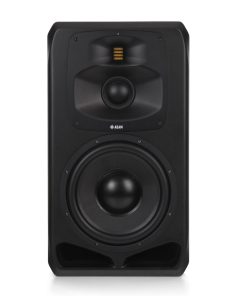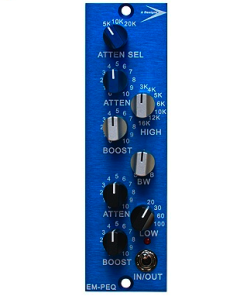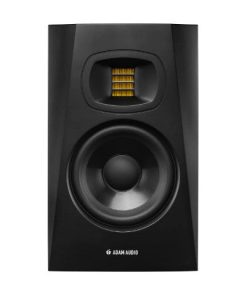Drawmer 1972 – Dual Mic, Line & Instrument Preamplifier Drawmer
$ 1.199,00 $ 299,75
The 1972 Dual Mic, Line & Instrument Pre-Amplifier has been developed to make it ultra easy for you to capture perfect recordings every time. The 1972 gives you the ability to record pristine audio from a variety of sources and especially makes the most of the multitude of microphones that you find in the studio, from budget to high-end dynamic and also ribbon mics. Uniquely it has added features that help out in difficult to record situations that are not found on other preamplifiers.
The 1972 uses the latest THAT Corporation technology in the two independent mic preamps to provide ultra clean, transparent and precise recordings, that can be processed at a later stage using your favourite methods, be it compression, E.Q., saturation, valve, transformer or tape. Each channel is capable of 66dB of stepped gain, with an additional +/-12dB’s trim at the output, and incorporates switchable mic impedance for accurate mic matching to bring out the best from any microphone used, and also provides a way to “sculpt” the sound of passive dynamic, and especially low-impedance ribbon microphones.
Capture Difficult Sources
As well as standard features that you will find on most preamplifiers, such as phase reverse, the 1972 also has a wealth of tools that help when recording difficult sources, making it possible to get the best quality recording with ease:
Fully variable LoCut and HiCut controls have been included to allow you to tune into recordings and remove superfluous signals in the low and high frequencies, removing rumble and hiss with ease. In addition the Shape feature allows you to bring out the bass or treble using a subtle tilt EQ.
Record Very Low Signals with Ease
A unique feature that has been developed by Ivor Drawmer and currently only available on the 1972 is the Lift control. Lift is essentially a low level dynamic gain module which has no effect on signals above 0dB. This makes it possible to record very quiet signals in a transparent and natural way without distortion and clipping taking place on the louder passages, and is especially effective for very dynamic signals, finding great use in recording piano, and on all vocals, including speech, and for capturing ambiance.

Be Creative using Variable Mic Impedance
You may have encountered the general rule that the impedance of the preamp input should be 10X that of the mic to get an input impedance that is appropriate for the mic and to avoid loading the source, however, it is less known that mismatching can create some interesting tonal differences that can be used more creatively. The 1972 has 3 settings per mic input: 200, 600 and 2400 Ohms, making it easy for you to explore the various tones. The result will depend on the microphone used, as the tonal changes will be obvious with some mic’s but others will hardly alter, and on the material you’re working with.

Features:
- Two THAT Corporation ultra clean mic pre’s with 66dB of gain in 6dB steps, plus +/-12dB’s trim at the output.
- Separate Line & Mic input XLR’s on the rear plus a pro quality instrument DI input on the front panel.
- Can be used on a multitude of sources including instruments and all type of microphones in the studio from low to high end, plus ribbon mics.
- Switchable Mic Impedance for accurate mic matching and also mic tone sculpting.
- A wealth of features not found on other preamps make it ease to capture difficult to record sources.
- Unique Lift feature for boosting very low signals without the loud signals clipping.
- Fully variable LoCut and HiCut filters to tune into signals and remove unwanted sounds.
- Shape switches are included to control bass and treble using a subtle tilt EQ.
- Phantom Power and Phase Reverse.
- Two backlit Analogue V.U. Meters with Switchable +10dB Rescale Mode.
- Time delay relays on outputs for clean power up/down.
- Internal Low Hum Toroidal Linear Power Supply with Voltage Selector Switch.
- Classic Drawmer build quality with rugged steel chassis and aluminium front panel.
- Designed and Handmade by Drawmer in the United Kingdom.

Prompt Delivery and Professional Packaging
Our long-standing partnership with UPS FedEx DHL and other global carriers lets us offer a range of shipping services. Our warehouse staff is extremely skilled and will package your items according to our precise and exact specifications. Your goods will undergo an extensive inspection and be safely packaged prior to being sent out. Each day, we ship to thousands of customers in many countries. The fact that we are committed to becoming the biggest online retailer in the World is clear. These warehouses are in Europe in the same way as they are in USA.
Note: Orders that include more than one item are assigned a processing period depending on the item.
Before shipping, we will inspect thoroughly the items you have ordered. Most orders are shipped within 48 hours. Expected delivery time is between 3-7 days.
Returns
Stock is dynamic. It's not entirely managed by us since we are involved with multiple entities, including the factory and the storage. The actual stock can change at any moment. It is possible that your order may be out of stock once the order has been placed.
Our policy lasts for 30 days. We cannot exchange or refund your order if it has been 30 days from the date of purchase.
For your item to be returned it must be in its original packaging, unopened and in the condition you received it. The item must be in its original packaging.
Related products
Microphones
Monitor Systems
Recording Equipments
Recording Equipments
Monitor Systems
Recording Equipments
Microphones
Recording Equipments
Monitor
Monitor Systems
Monitor
Headphones
Headphones
Microphones
Accessories
Monitor Systems
Monitor
Microphones
Accessories
Monitor
Mic Preamp
Accessories
Monitor Systems
Recording Equipments
Microphones
500 Series



























































